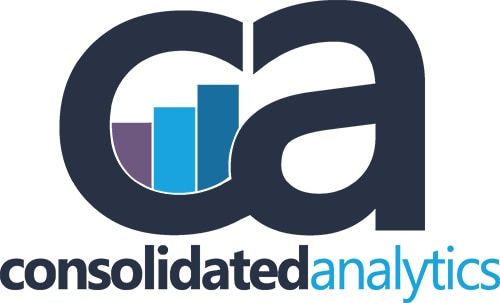Project management in the mortgage industry is often highly complex and requires that teams, processes, compliance experts, and technology work together effectively for execution excellence. A project’s success can be attributed to a range of factors from exceptional and organized project leadership and detailed planning through project methodology and cross-team collaboration. Since the COVID-19 virus has shifted many projects to a virtual environment, the collaboration factor deserves further consideration. In-person chemistry most certainly contributes to team enthusiasm, problem-solving, and project follow-thro ugh. While the face-to-face factor can be difficult to measure, project teams that prepare for its absence in a virtual environment will be better equipped for success. What can be done?
ugh. While the face-to-face factor can be difficult to measure, project teams that prepare for its absence in a virtual environment will be better equipped for success. What can be done?
Consolidated Analytics’ consulting and advisory teams have managed countless projects with remote staffing. We asked our most experienced mortgage industry consultants and leaders how to keep projects moving forward from a virtual location while continuing to infuse passion, inspiration, and collaborative problem-solving. Based on their responses, we consolidated their advice on virtual project management into an easy-to-remember acronym: PUSH, which covers People & Productivity; User-focused Platforms, Shifting Perspective, and Honest & Open Communication.
[P]EOPLE & PRODUCTIVITY
For a project to succeed, incentivizing milestones will help keep the spirits high within your team and project participants. While analyzing project failures is vital to growth, acknowledgment of success is just as important. Dana Gross, Consolidated Analytics’ Head of HR and solution leader for the company’s Learning and Development offering states, “Whether you are trying to beat timelines or solve a technology coding or development issue, incentives can be the nudge needed to catalyze human capital retention and engagement, especially when they are not used to working in a remote setting.”
Gross further suggests that the importance of face-to-face team engagement can be under-appreciated. In some cases, a project leader may not recognize engagement teetering off after they shift to a remote setting. Therefore, it is helpful for project leaders to be aware of changes in engagement levels. “I firmly believe there is nothing more powerful than a collaborative and connected team environment. If you find that creative and critical thinking is fading in a remote setting, you will also likely see problem-solving, effective communications, and project innovation levels drop off,” Dana says. “Team leaders can rectify this by generating friendly competition, hosting genuine feedback sessions, and offering other engagement strategies that prompt brainstorming.”
[U]SER-FOCUSED PLATFORM
When shifting to a virtual setting, project managers need a platform that provides structure without sacrificing flexibility. We spoke with Stephen Faulkner, Division President for Consolidated Analytics Consulting & Advisory business unit and he reminded us that the most basic use of a project management platform is to track progress throughout the project lifecycle.
“In a virtual environment, your platform should, at a minimum, enable the user to quickly view and understand the project’s status,” Faulkner says. “It sounds simple, but a single location to track milestones will give team members the information and data to ask better questions, identify gaps, and remind your team members of expectations and tasks.”
In alignment with Dana Gross’s recommendations, Steve adds, “Project Management Platforms need to be paired with proactive communication and interaction with the team to ensure everyone on the team stays in sync and feels connected to the project’s overall goals and progress. Project managers should know the business as well as the project management discipline.”
Mike Celenza, Consolidated Analytics’ Senior Vice President, Consulting & Advisory – specializing in mortgage & banking technology implementation and optimization– agrees with Steve’s assessment. He further adds that many project management tools offer integration and customization features that enhance project organization and streamline productivity for the user. “Figure out which platforms, technologies, and tools are required for your project and your team ahead of time and ensure your core PM platform offers a way to interact with those tools so that it serves as a centralized database,” Celenza says. “Each project is different. Each team member is different. Because of that, the choice of a PM platform may be a matter of meeting unique project or team needs to simplify access to the right information.”
[S]HIFT PERSPECTIVE
As business norms continue to evolve to cater to the information age, and threats such as COVID-19 emerge, it is important that project leaders and team members embrace those changes and adapt their approach. In the mind of Consolidated Analytics’ President Brian Gehl, shifting perspective and remaining fluid in the face of change is essential. “We can look at the shift to virtual as a burden, or we can look at it as a chance to try new things and grow,” Gehl says.
In Gehl’s view, a virtual environment is not always ideal for every project, but it does offer project team members an opportunity to expand both technology and communication skills. Gehl continues, “Try to evaluate technology from the perspective of your less technologically-advanced members and equip your team with the proper training resources to gain familiarity. The more you enable your team to grow, the more confidence they gain, and the better your project will perform both virtually and in the office.”
[H]ONEST & OPEN COMMUNICATION
Projects bring together various expertise, personalities, and dependencies. When moving to a remote PM environment, project leaders need to keep in mind that the absence of in-person communication could affect your team’s ability to understand personality nuances or interpret tone of voice in email, or otherwise. An icy team dynamic paired with deadline pressures and downstream dependencies may create distractions, distrust, or infighting.
According to Melissa Hill, VP, Engagement Manager at Consolidated Analytics, honest and open communication, and proactive planning are central to mitigating such challenges. “Whenever possible, anticipate and proactively address conflict,” she says. “A 360-degree view of project roles, timelines, expectations, communication plans, and dependencies will give team members context, helping them understand how their work affects others.”
When it comes to team conflict, Hill suggests that project members facilitate and moderate healthy debate discussions and leverage their video conference tools to help team members connect and bond. “A detached and apathetic team is no team at all,” Hill says. “A structured and moderated forum will give team members the opportunity to openly discuss challenges while maintaining a respectful tone.”
———————————-
Simply stated, giving your virtual project a PUSH boils down to honest communication, engagement, perspective, and leveraging your technology to ensure milestones are met. The nuances of your project may require greater considerations, however, by keeping these points in mind your mortgage projects will continue to move forward, as will the versatility of your team and your company.
Learn more about Consolidated Analytics’ Consulting and Advisory and Project Management Solutions.
